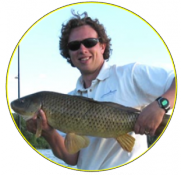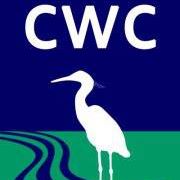 Q1. What is your educational background?
Q1. What is your educational background?
I did my undergraduate studies at Cornell University, went to U. of Maryland for my MS in Marine Ecology, U. of Wisconsin – Madison for a Ph.D. in Limnology and Oceanography, and then out to Seattle for a postdoc at U. of Washington.
Q2. What inspired you to become a scientist?
I grew up on the Delaware River in New York state and spent a lot of time as a kid fishing and snorkeling on the river. I’ve always been fascinated by fish!
Q3. What is your role as a scientist for CWC?
I’m part of the “fish team” from Rutgers, U. of North Carolina, LSU and LUMCON. We’ve been working to understand the impacts of the oil spill on marsh fishes. More specifically, we’ve been examining the otoliths of the Gulf Killifish or Cockahoe to look for signs of exposure to oil. The otolith is the “ear stone” of the fish, and as the fish grows, this calcium carbonate otolith records the chemical composition of the surrounding water. The otolith also has bands, like tree rings, that we can use to see how fast the fish grew at different times in its life. By examining the chemistry of the otolith and the growth bands, we hope to determine whether individual fish were exposed to oil and whether this altered their growth.
Q4. What do you like the most about doing scientific research?
Well, the field work is a big part of the fun for me. I love mucking about in the salt marsh observing all of the critters going about their lives and interacting with one another. A lot of our scientific questions and hypotheses come from just observing the natural world and wondering how it all fits together.
I also get really excited working with the data that we collect in the field or that comes from our analysis in the laboratory. Often the patterns in the data aren’t apparent until you graph them the right way or apply the right statistical method, but then they pop out and the answer to your question is right there. That’s an exciting moment when you first plot your data and see what it reveals.
Q5. Can you describe any surprising findings you have come across so far?
We’re just completing a fish movement study where we’ve tagged Killifish with tiny metal tags about the size of this dash: – We then release the fish into the marsh creeks where we caught them. When we come back later and trap Killifish, we scan them with a metal detector like the ones used at an airport security station to see if they are tagged. What we’ve found is that killish are real home bodies. Even nearly a year after tagging them, we’re still finding them 50 feet from where they were released. Nothing’s stopping them from swimming all over the bayou, yet they prefer to stay right there in their home creek. This makes them great as indicators of the impact of pollution because it’s safe to assume that they are representative of the conditions near where we caught them.

